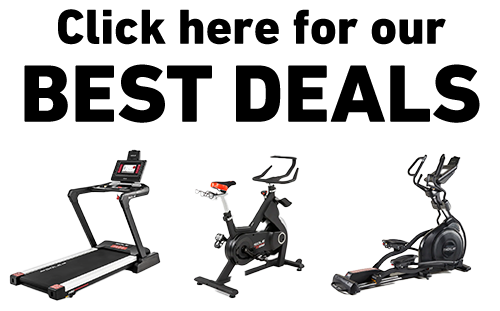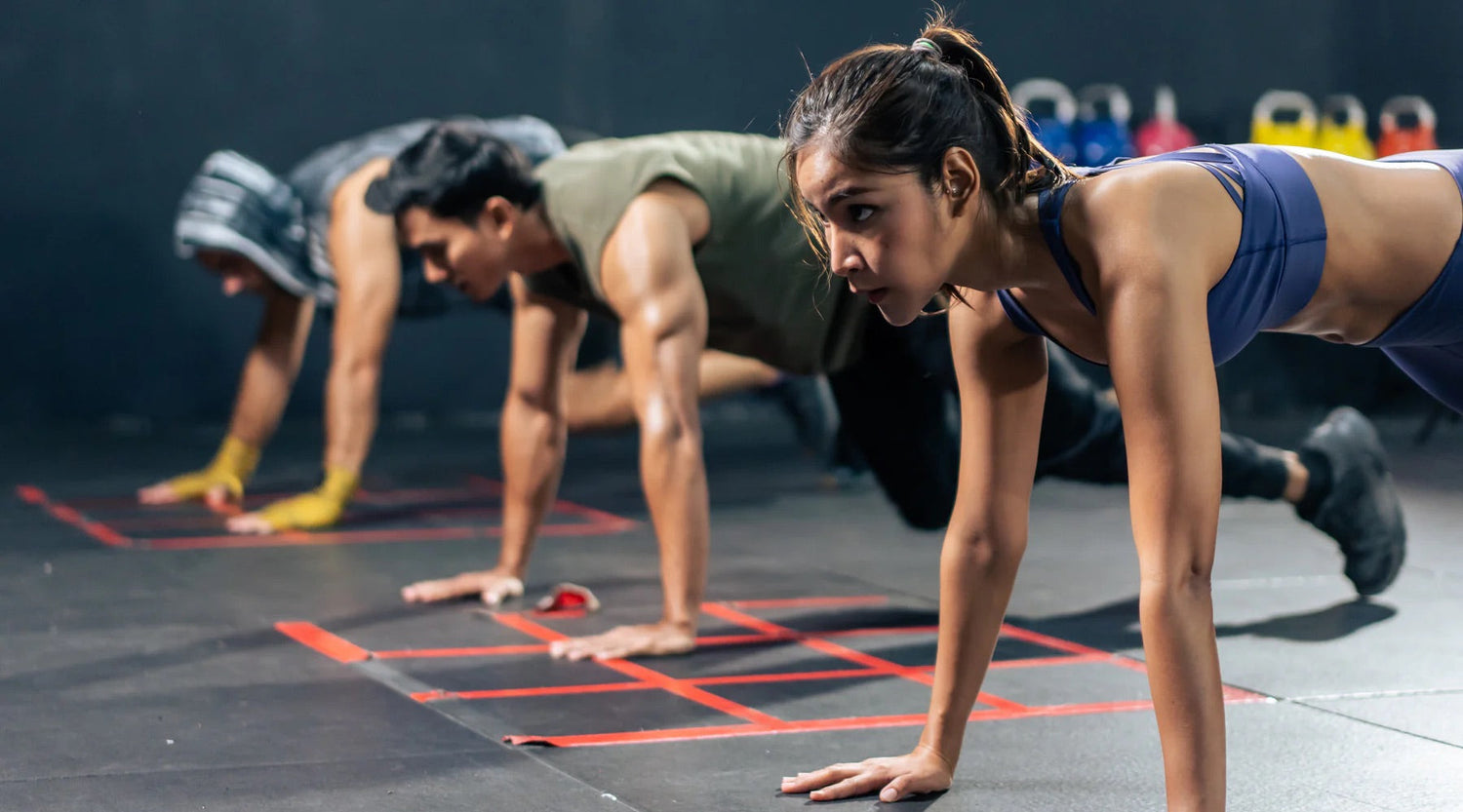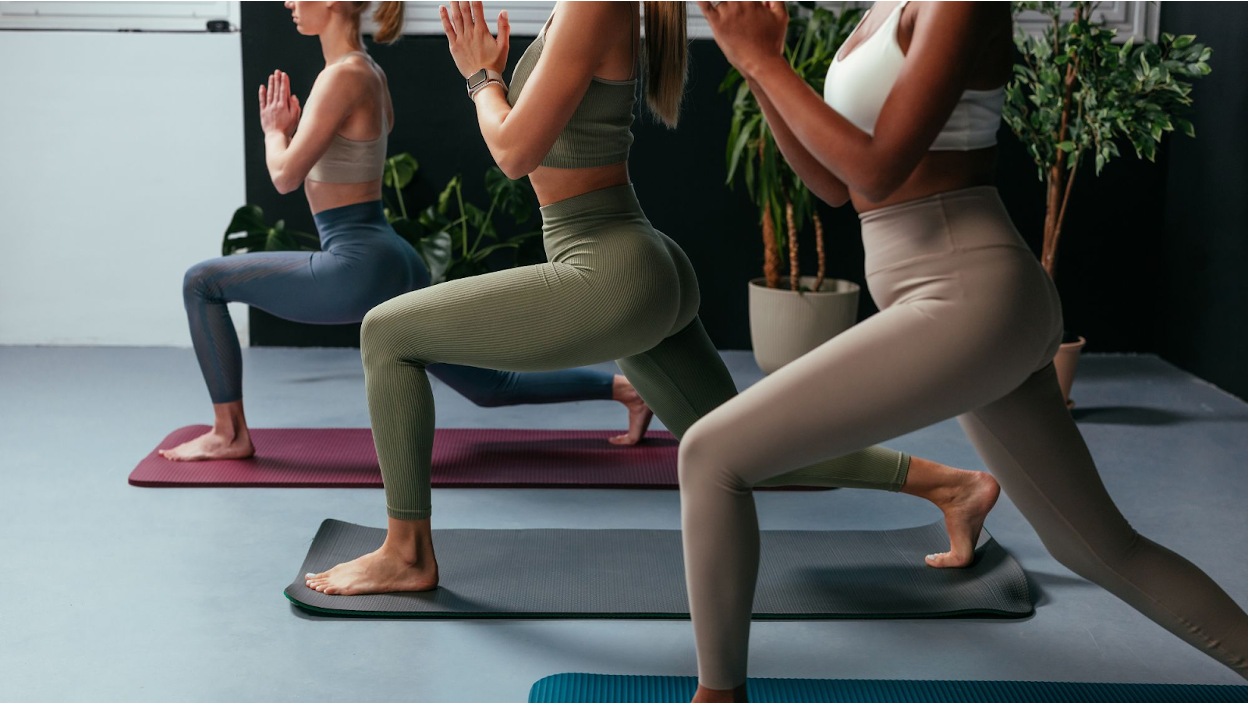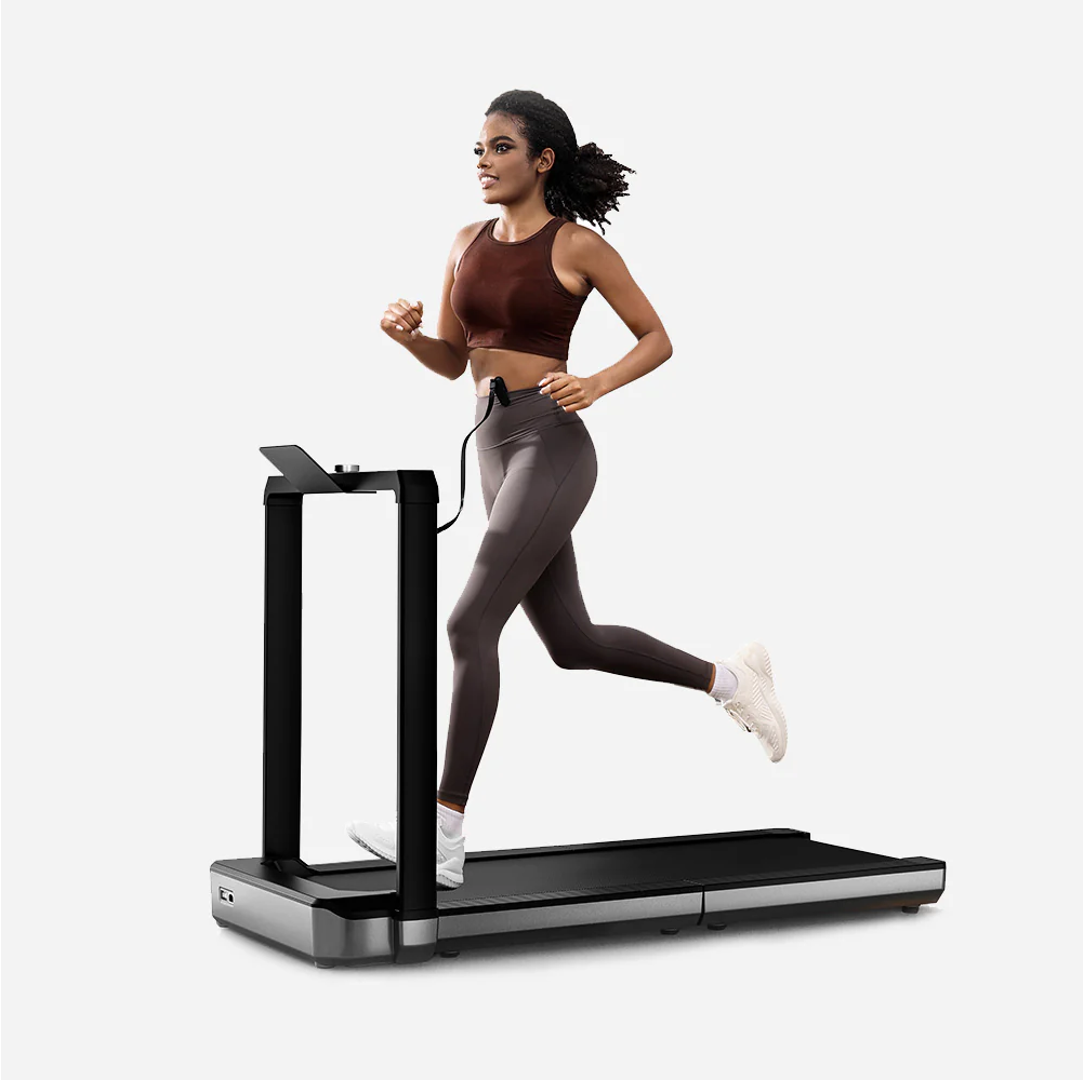Key Takeaways
- Planks are ideal for developing core stability and endurance while mountain climbers excel at combining cardio with strength training in one comprehensive movement.
- While planks primarily engage your core, shoulders, and back in an isometric hold, mountain climbers activate additional muscle groups through movement including quads, hamstrings, and glutes.
- Mountain climbers burn significantly more calories per minute compared to planks due to their higher-intensity nature and cardiovascular demands.
- For optimal fitness results, incorporate both exercises into your routine rather than choosing only one. They complement each other perfectly for complete core development.
- SOLE Fitness equipment provides the perfect complement to bodyweight exercises, while our free SOLE+ app offers hundreds of expert-led classes that strategically combine planks, mountain climbers, and equipment training for optimal results.
What Makes Planks and Mountain Climbers Different
The battle between planks and mountain climbers centers on one key distinction: static versus active movement. Planks keep your body in a fixed position, engaging your core through isometric contraction where muscles work without changing length. Mountain climbers, however, add rapid movement to the plank position, creating an active exercise that challenges stability while elevating your heart rate.
The intensity difference is immediately noticeable when you perform these exercises back-to-back. A 30-second plank might feel manageable with controlled breathing and mental focus, while 30 seconds of mountain climbers will likely leave you breathless with your heart pounding.
This fundamental contrast explains why fitness experts recommend both exercises rather than choosing one over the other, they develop complementary aspects of fitness that together create a more complete physical foundation.
|
Premium Home Gym Equipment with Award-Winning Quality!
Why Choose SOLE: ✓ Commercial-grade quality for home use 30-Day Money-Back Guarantee: Love it or return it, no questions asked. |
Plank Benefits That Transform Your Core Strength
By holding your body in a straight line from head to heels, you create constant tension through your entire midsection, forcing deep stabilizing muscles to engage continuously.
Full Body Stabilization During Static Holds
Planks create a full-body training effect by requiring multiple muscle groups to work together in perfect coordination. Your shoulders, chest, and arms support your upper body while your glutes and legs maintain lower body alignment.
The longer you hold, the more your body must recruit additional muscle fibers to maintain position, creating a cascade of activation throughout your entire kinetic chain.
This stabilization challenge translates directly to improved performance in virtually all physical activities. If you're lifting weights, running, or simply carrying groceries, the body-wide tension control developed through planking helps you move more efficiently with less risk of injury.
Deep Abdominal Engagement for Stronger Posture
Unlike crunches or sit-ups that primarily target surface abdominal muscles, planks force engagement of the deep core muscles that support your spine.
The transverse abdominis, internal obliques, and multifidus all activate during a properly executed plank, strengthening the muscular corset that maintains proper vertebral alignment.
This engagement pattern directly combats the negative effects of prolonged sitting and poor posture that plague many modern lifestyles.
Low-Impact Nature Makes It Joint-Friendly
Planks deliver remarkable core strengthening benefits without imposing high-impact stress on your joints.
Unlike rigorous exercises that involve jumping or repetitive movement patterns, planks create tension through stillness, making them accessible even for those with joint sensitivity.
This low-impact quality makes planks particularly valuable for beginners, older adults, or anyone returning to exercise after injury.
Mountain Climber Advantages for Total Body Conditioning
Mountain climbers take the stability challenge of planks and amplify it with active movement.
Cardio and Strength Combined in One Move
The beauty of mountain climbers lies in their ability to increase your heart rate while still building muscular strength and endurance.
Unlike traditional cardio exercises that primarily challenge your cardiovascular system, mountain climbers maintain constant tension through your upper body while your legs perform explosive movement patterns.
This combination creates a training stimulus that improves multiple fitness components simultaneously, making it incredibly time-efficient for those with busy schedules.
Dynamic Core Activation Through Movement
While planks build static core strength, mountain climbers develop your core's ability to stabilize during movement, a crucial skill for athletic performance and injury prevention.
Each time you drive your knee forward, rotational and anti-rotational forces challenge your core muscles to maintain proper positioning.
This stabilization more closely mimics real-world movement patterns you encounter in sports and daily activities.
Enhanced Metabolic Response for Fat Burning
Mountain climbers trigger a significantly higher caloric burn than planks both during and after your workout.
The explosive nature of the exercise increases oxygen consumption and creates a metabolic demand that continues long after you've completed your session.
This afterburn effect, known as excess post-exercise oxygen consumption (EPOC), means your body continues burning additional calories for hours following an intense mountain climber workout.
Muscles Worked: Planks vs Mountain Climbers
Plank Primary Muscle Focus
The plank primarily targets your core's deepest stabilizing muscles, with the transverse abdominis acting as the central player. This deep abdominal layer wraps around your midsection like a corset, providing critical support to your spine and internal organs.
Your shoulders also bear significant load during planks, with the anterior deltoids and serratus anterior muscles working continuously to support your upper body weight. The longer you hold a plank, the more these muscles must engage to prevent your shoulders from collapsing or rotating inward.
Mountain Climber Primary Muscle Groups
Mountain climbers build upon the plank's foundation by adding hip flexor, quadriceps, and hamstring activation through the dynamic leg movement. Each time you drive your knee toward your chest, your hip flexors (primarily the iliopsoas complex) contract powerfully, while your quadriceps extend the knee as you return to the starting position.
This repetitive movement pattern develops lower body power and coordination while maintaining the core and upper body benefits of the plank position.
Head-to-Head Comparison: Plank vs Mountain Climbers
|
Feature |
Plank |
Mountain Climbers |
|
Primary Muscle Activation |
Rectus abdominis, obliques, transverse abdominis |
Rectus abdominis, obliques, transverse abdominis, hip flexors |
|
Core Strength Impact |
Isometric hold that builds static strength |
Dynamic core activation, improves endurance |
|
Muscle Engagement Duration |
Sustained contraction for duration held |
Repeated dynamic contractions |
|
Exercise Type |
Isometric |
Dynamic |
|
Joint Impact |
Low; minimal joint stress |
Moderate; requires some joint flexibility |
|
Stability and Balance |
Improves overall stability and posture |
Enhances cardiovascular fitness and agility |
|
Calorie Burn |
Low to moderate depending on duration |
High with sustained intensity |
|
Suitability for Beginners |
Highly suitable |
Good for beginners |
|
Primary Benefits |
Builds core endurance and posture; enhances spinal support |
Improves core endurance, cardiovascular health, and coordination |
Balancing Equipment and Bodyweight Exercises with SOLE Fitness
At SOLE Fitness, our equipment creates the perfect ecosystem to amplify your bodyweight training results. Our treadmills and ellipticals build the cardiovascular endurance that allows you to sustain longer, more intense mountain climber intervals, while our strength equipment develops the foundational muscle power that makes both exercises more effective and safer to perform.
But equipment alone isn't the answer—it's the strategic integration that matters. That’s why every SOLE Fitness purchase includes our comprehensive SOLE+ app with hundreds of expert-designed workout classes. These aren't random exercise videos; they're professionally programmed sessions that understand how bodyweight movements like planks and mountain climbers fit into complete fitness development.
Your fitness journey deserves more than compromise solutions. It deserves the complete SOLE experience where every element works together toward your success.
Ready to find out how the right equipment partnership can transform your relationship with exercises like planks and mountain climbers? With our 30-day trial guarantee and free curbside shipping, you can experience our commercial-grade equipment risk-free.
Check out our equipment today!
Frequently Asked Questions
How long should I hold a plank compared to doing mountain climbers?
For beginners, start with 15–20 second plank holds and build up to 30–60 seconds, while mountain climbers can be performed in 20–30 second intervals initially. As your fitness improves, aim for 60–90 second plank holds and 45–60 second mountain climber intervals.
Can I replace traditional cardio with mountain climbers and planks?
Mountain climbers can effectively replace moderate-intensity cardio sessions due to their high caloric burn and cardiovascular demands, but planks alone won't provide sufficient cardio benefits. A combination approach works best: use mountain climbers for high-intensity interval training sessions 3–4 times per week, and incorporate planks daily for core strengthening.
Which exercise is more effective for achieving visible abs?
Neither exercise alone will create visible abs without proper nutrition to reduce body fat percentage. However, mountain climbers have a slight edge for ab definition because they burn more calories and help reduce overall body fat while strengthening the core.
How do I progress from basic planks and mountain climbers to advanced variations?
Progress planks by increasing hold time first (30 seconds to 2+ minutes), then add difficulty through variations like single-arm planks, planks with leg lifts, or side planks. For mountain climbers, start by increasing speed and duration, then progress to cross-body mountain climbers, single-leg variations, or adding equipment like sliders. Always master proper form at each level before advancing.
How does SOLE Fitness equipment enhance my plank and mountain climber training?
SOLE Fitness equipment creates the perfect ecosystem to amplify your bodyweight training results. Our treadmills and ellipticals build the cardiovascular endurance that allows you to sustain longer, while our free SOLE+ app features hundreds of expert-designed workout classes that strategically integrate planks and mountain climbers with equipment training.
These professionally programmed sessions ensure proper progression, prevent plateaus, and maximize your time investment.







Leave a comment
This site is protected by hCaptcha and the hCaptcha Privacy Policy and Terms of Service apply.